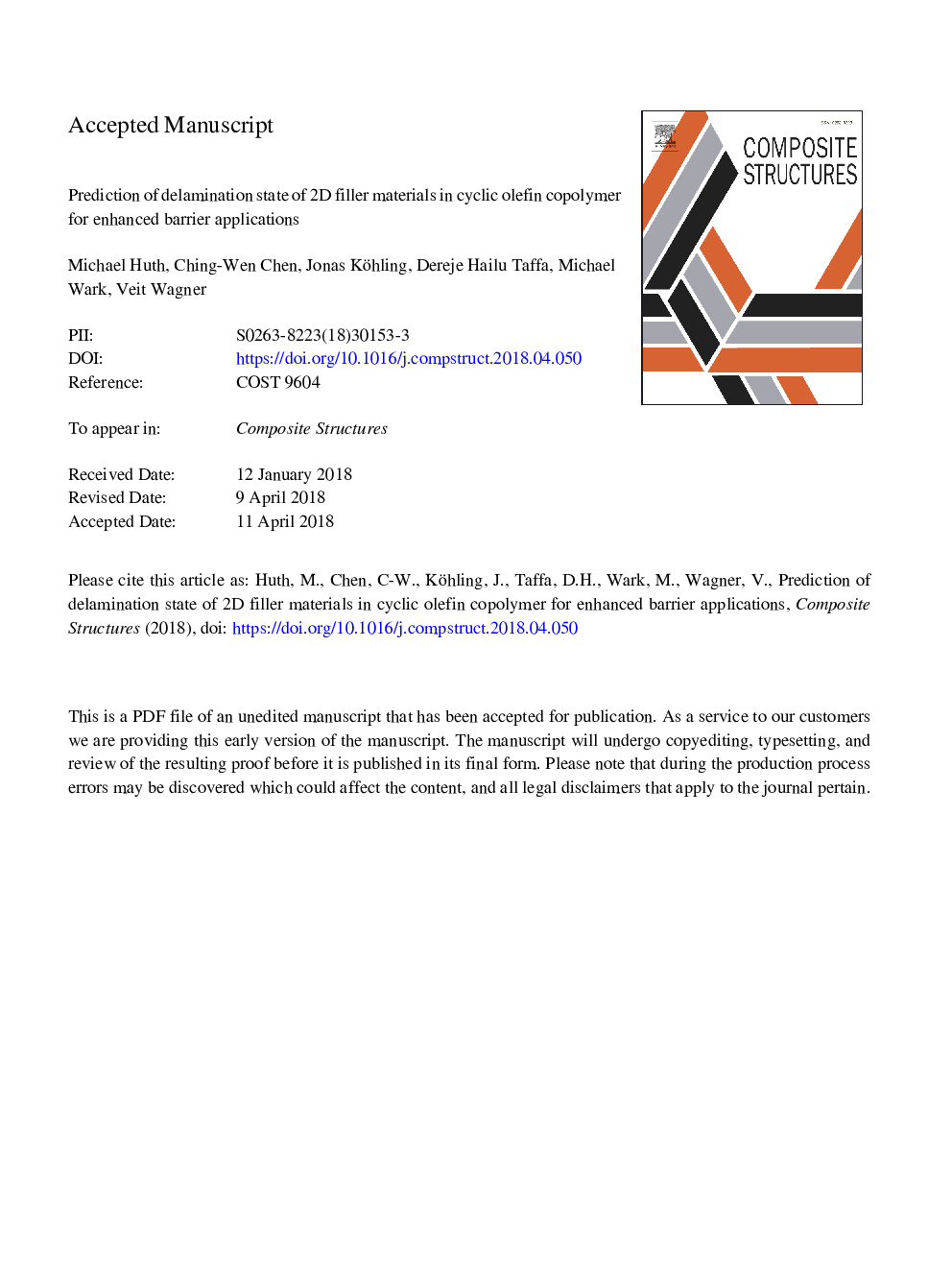| Article ID | Journal | Published Year | Pages | File Type |
|---|---|---|---|---|
| 8959979 | Composite Structures | 2018 | 29 Pages |
Abstract
Surface energies described by Hansen solubility parameters (HSP) of a synthetic organophilic fluoromica (MAE), molybdenum disulfide (MoS2), and graphene are used to predict their delamination properties in a cyclic olefin copolymer (COC). This prediction suggests MAE as the most appropriate filler for COC, followed by MoS2 and graphene. Nanocomposites are prepared via solution process and have been investigated on their delamination state using X-ray-diffraction (XRD), Raman spectroscopy, transmission electron microscopy (TEM), and angle-resolved light scattering (ARS). Nanocomposites based on MAE shown morphologies close to complete delamination. Agglomerations are detected in the case of MoS2 and graphene. For a potential barrier application, water vapor transmission rates (WVTR) are experimentally determined. In such nanocomposites, inorganic fillers increase the diffusion length of water, known as tortuous path model, which enhances the barrier properties. Highest barrier enhancements are obtained using MAE based nanocomposites reducing the WVTR down to 40% of the initial value. The prediction of delamination based on Hansen solubility parameters is found to be a very helpful tool for selecting fillers in composites.
Related Topics
Physical Sciences and Engineering
Engineering
Civil and Structural Engineering
Authors
Michael Huth, Ching-Wen Chen, Jonas Köhling, Dereje Hailu Taffa, Michael Wark, Veit Wagner,
